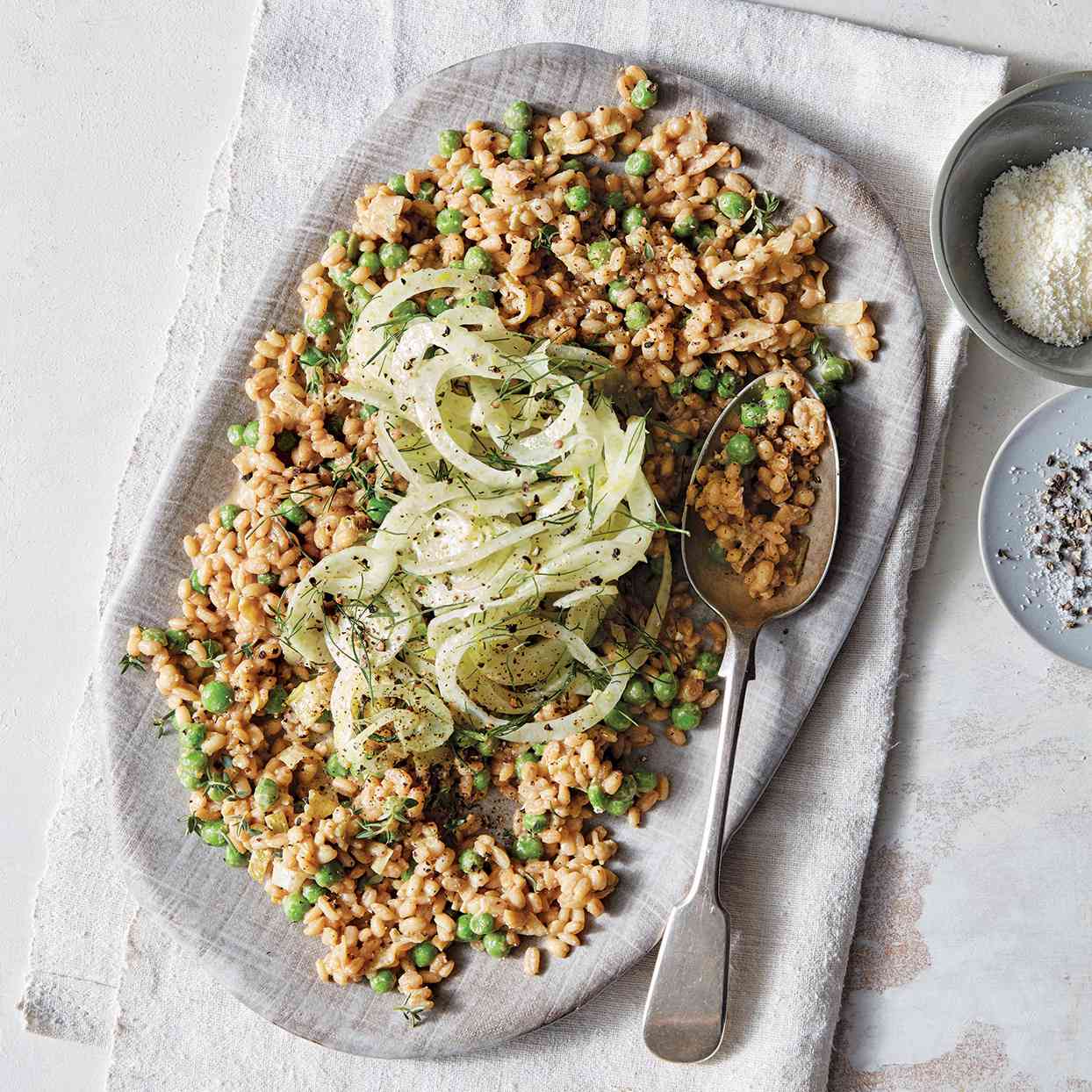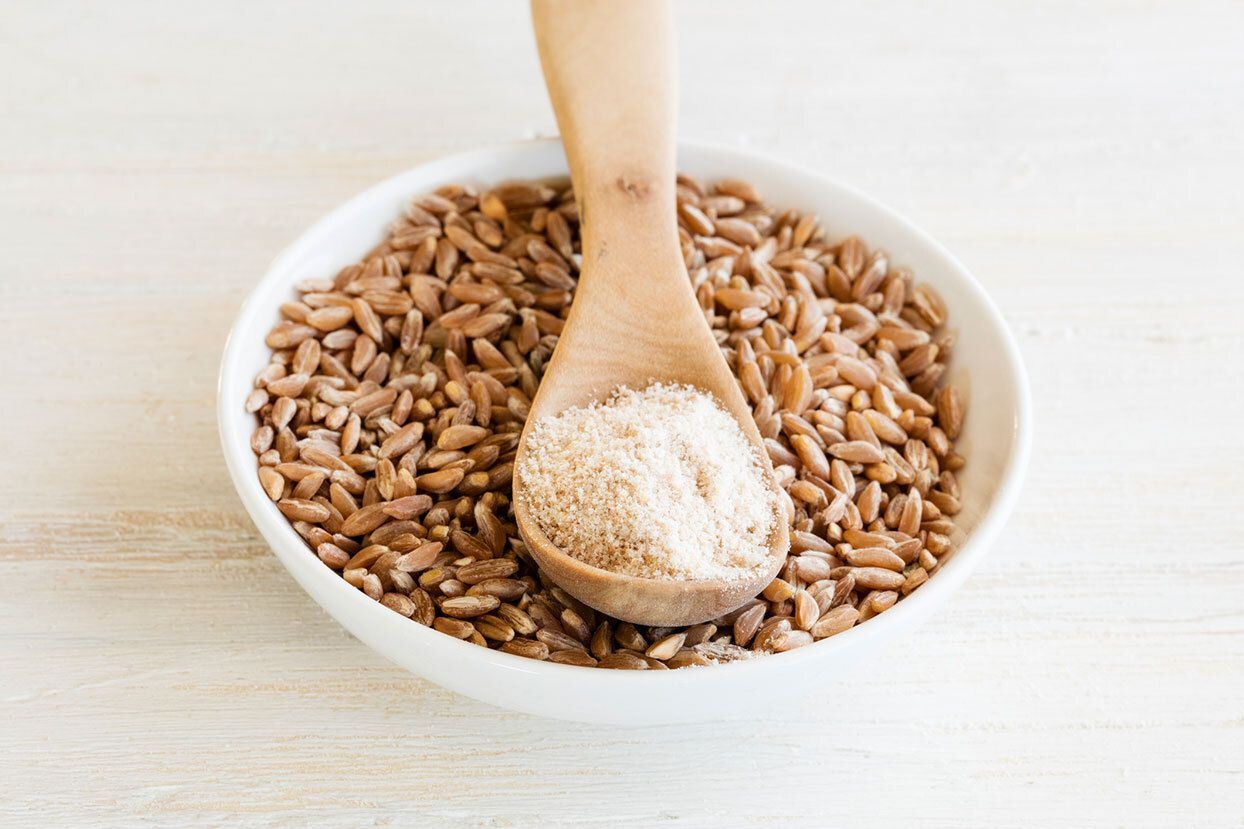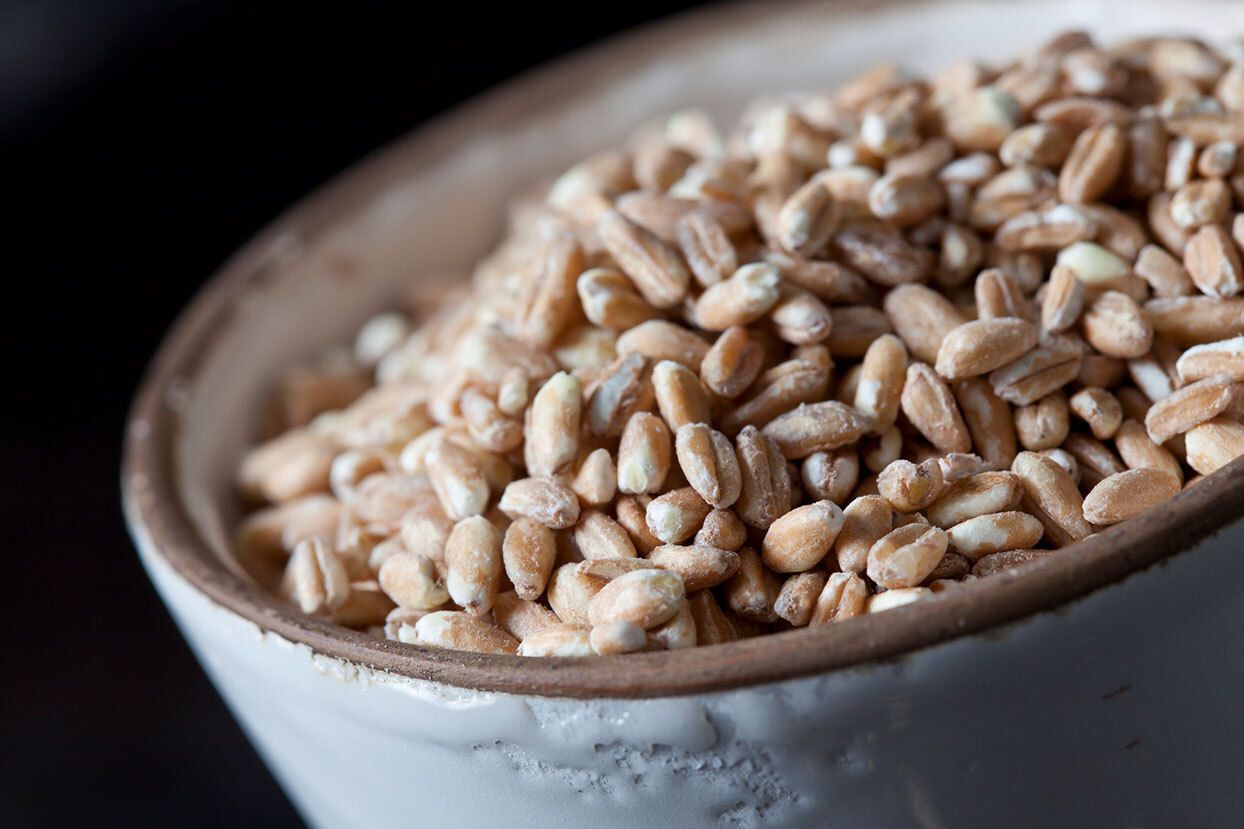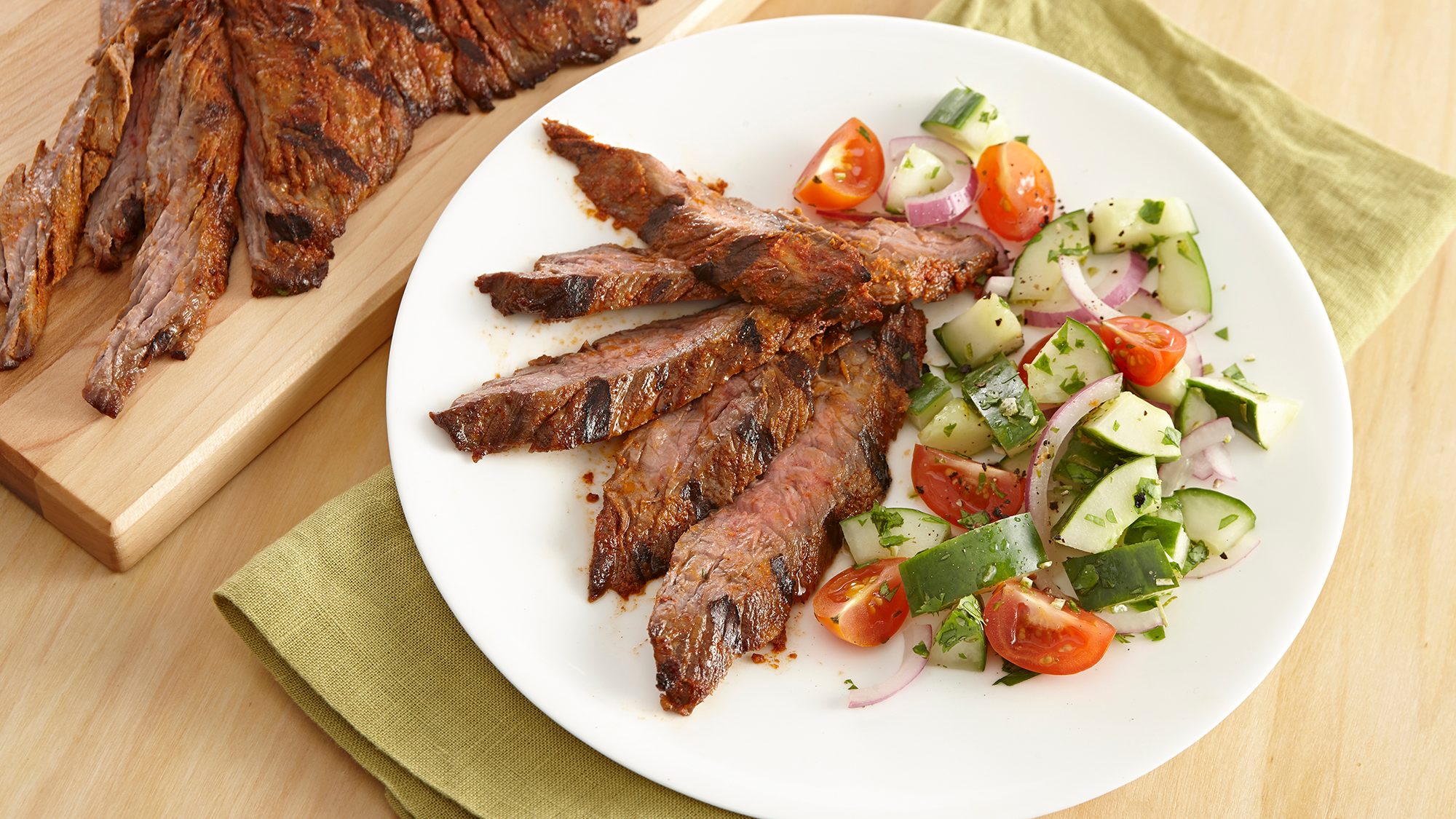If you're tired of quinoa, let us introduce you to farro.

If you haven't gotten around to trying farro, it's time: this ancient grain, a variety of wheat, is a refreshing break from quinoa or rice. While it is a grain, its texture and flavor give vegetarian meals the satisfaction you might expect from an omnivore's kitchen. It's delicious and hearty, but it's a little bit different from other grains.
Farro is worth getting to know—especially if you're trying out a plant-based diet—so we put together a quick guide on what farro is, farro nutrition facts and how to cook farro, along with recipes for inspiration.
What Is Farro?
Farro is a general name that can apply to three types of wheat: emmer, einkorn and spelt. They're all slightly different grains, but they all fall under the farro umbrella. You may find whole farro (the bran and husk is intact), semi-pearled farro (part of the bran is removed) and pearled farro (most of the bran is removed). If you're looking to try farro, it's good to know which type you're getting.
Buying Farro
Farro is widely available—you can find it at most grocery stores and online—but how the different types of farro are labeled could throw you off.

Getty Images
Emmer
You'll probably encounter "Italian farro" the most. What's labeled as "Italian farro," or pearled farro, is usually emmer (but that probably won't be printed on the label). It comes in packages or can be bought in bulk. Because it's pearled, meaning the outer husk and bran have been stripped away, you don't have to soak it overnight.
For most people (myself included), "Italian farro" is what people think of when they hear "farro." It cooks fairly quickly and can be ready to serve in about 20 minutes. It's a delightfully large grain with a chewy texture that works well in soups and salads. Cooked, the grain is about the size of a small bean. It makes a salad filling and substantial and is a great addition to soups.
You can also find whole farro, but because the bran and husk are intact, it will take a lot longer to cook—at least twice as long as the pearled variety. The grains can be soaked before being boiled to speed up the cooking time. If you have a pressure cooker or an Instant Pot, cook 1 cup of whole farro with 4 cups of water and it can be ready in 15 minutes. And, last but not least, there is semi-pearled farro—a cross between the two that has some, but not all of the bran left.
Some brands only list the ingredients as "pearled," "semi pearled" or "whole-grain" farro. While all are delicious, it's worth checking the package for exact instructions because the grains and processing vary.

Getty Images
Einkorn
The other type you may see is farro piccolo which you may mistake for "Italian farro." Though it sounds like it should be lumped in with the quick-cooking type, it's actually a different species of wheat (einkorn rather than emmer). It's delicious, nutty and is comparable in flavor and texture to brown rice. You can use it the way you'd use any grain—soups, grain bowls or stir-fries. The process and cook time is the same as whole-grain farro from emmer, but always double-check the cooking instructions on the package.

Getty Images
Spelt
Spelt is a bit different from the other types, but is also sometimes called farro on packages. Cooked, the grain is smaller and darker than the other two. Spelt is also good in salads, soups and grain bowls. Cooking it is similar to the other two types of wheat—it's boiled in water for about 40 minutes—but check the package for exact instructions.
Farro Nutrition Facts
All three types of farro in their whole-grain form are high in protein and fiber. Einkorn and spelt varieties have a healthy dose of iron, making them excellent options for people on vegetarian and plant-based diets. Pearled and semi-pearled farro lose some (but not all) of their fiber and other nutrients in exchange for a quicker cooking time.
Pearled Farro Nutrition Facts
In 1/4 cup of dry farro, you get:
- 190 calories
- Protein: 6 g
- Fat: 1 g
- Carbs: 38 g
- Fiber: 5 g
- Iron: 2 mg
Ready for more farro in your life? Try some of our favorite recipes:
Garlic-Lime Pork with Farro & Spinach
Lemon-Herb Salmon with Caponata & Farro
Farro, Almond & Blueberry Breakfast Cereal
Creamy Mushroom & Tomato Farro Risotto
This article was written by Rachel Roszmann from EatingWell and was legally licensed through the Industry Dive publisher network. Please direct all licensing questions to legal@industrydive.com.







